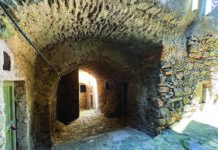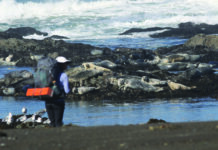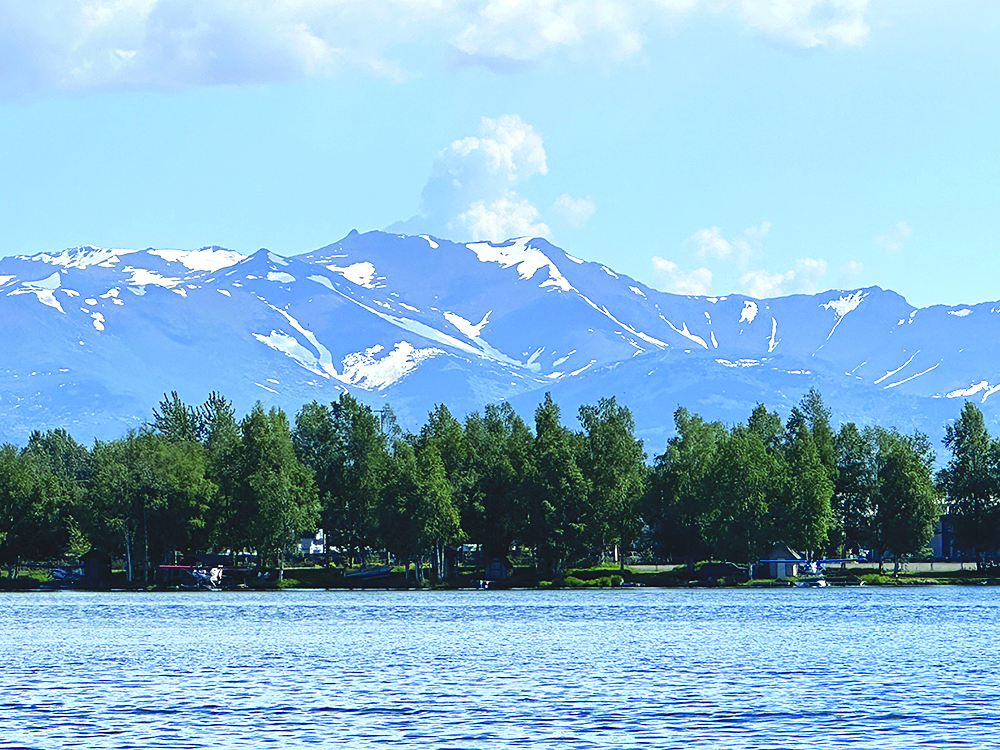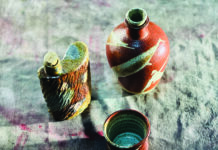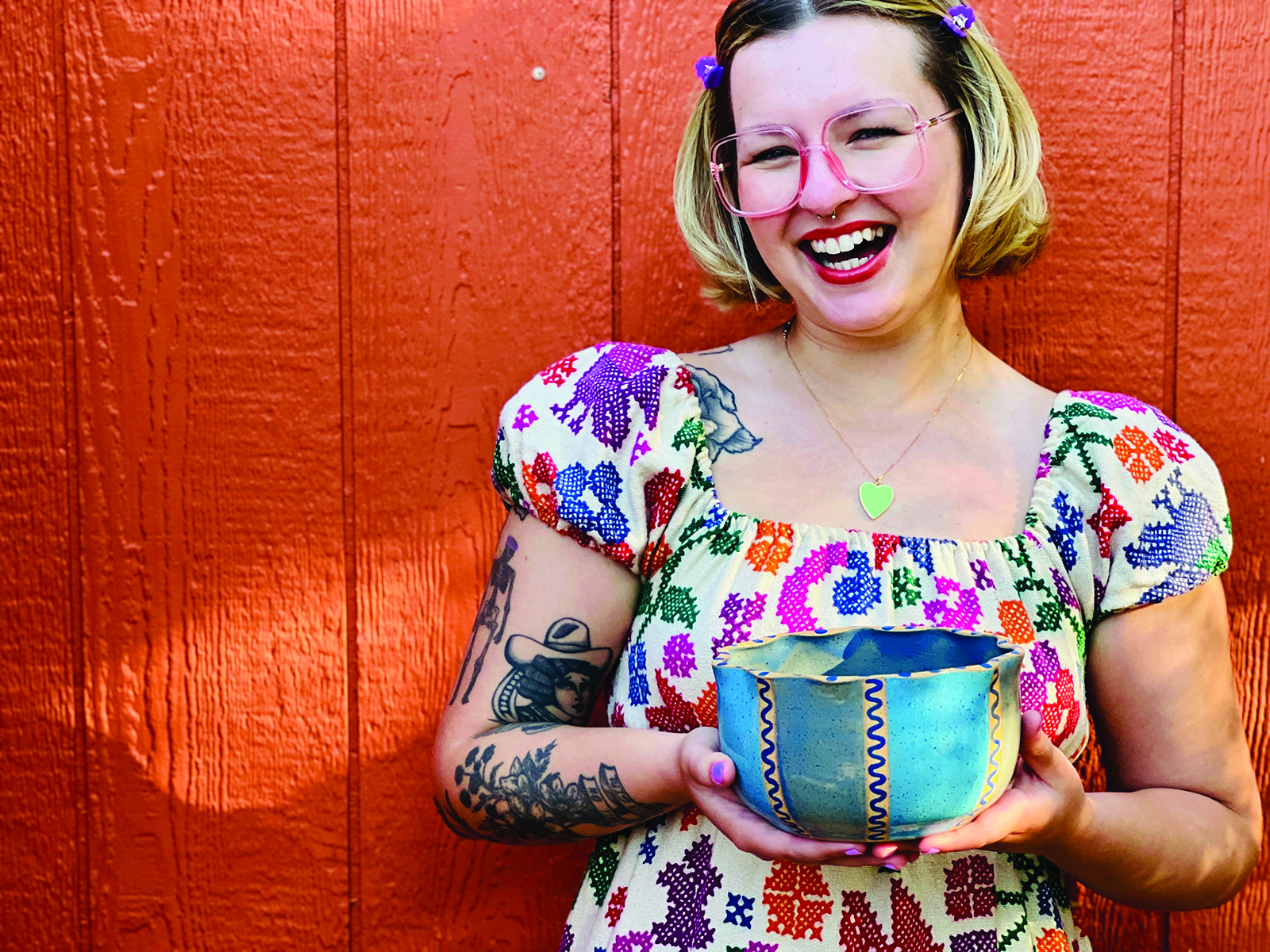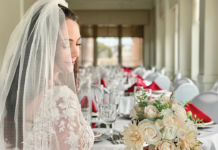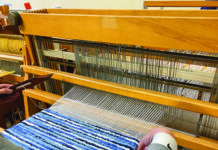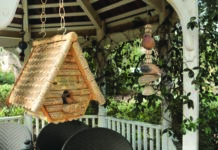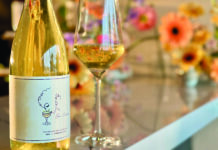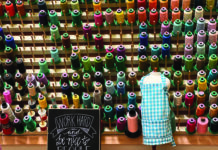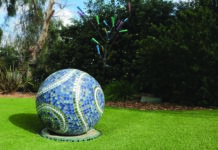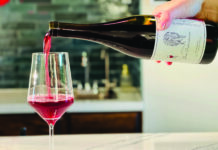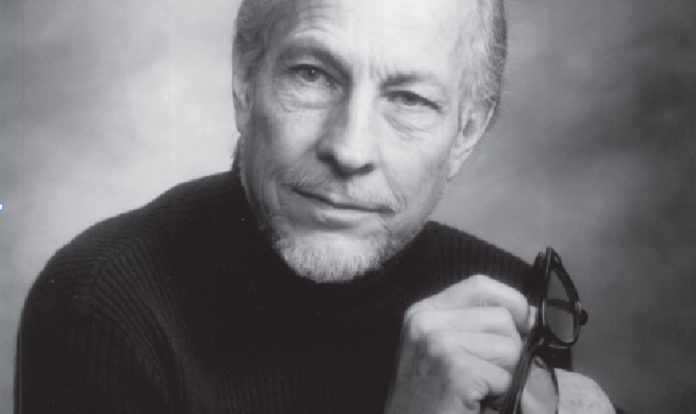By Leslie A. Westbrook.
Ah, music and love. Such a “loverly” subject. Music inspires. Music can make you fall in love with someone, something or even a place. It can make you cry. Movies would be boring without music. Music is great to cook by, dance to and sing along with. I once fell in love — with Tierra Amarilla in Northern New Mexico — while driving around listening to a CD by Ventura College professor/recording artist Bevan Manson.
Music’s power and majesty, particularly where love is concerned, cannot be overstated.
With Cupid’s arrow due to strike on Feb. 14, I found myself musing on music and love. If I could interview anyone on the subject I would choose the composer Alma Mahler (1879-1964), known for her assignations with famous, creative men (artist Gustav Klimt; composer Gustav Mahler, Bauhaus founder Walter Gropius, writer Franz Werfel, artist Oskar Kokoschka).
Alma Maria Mahler Gropius Werfel was a Viennese-born composer, author, editor and socialite. She composed at least 17 songs for voice and piano — somewhat dark and all quite beautiful. I would include Alma to one of those imaginary dinner parties where you can invite anyone from history.
Instead, I found myself at Danny’s Deli on Telegraph Avenue in Ventura, musing with Ojai-based composer John Biggs over a late breakfast of shared potato pancakes, clam chowder and tuna sandwiches.
Born into a musical family on Oct. 18, 1932, Biggs received training in acting, singing, piano, bassoon and violin, and was a member of his father’s church choir. As a performer, he founded the John Biggs Consort, which specialized in vocal chamber music from the Middle Ages to the 20th Century. As a composer, his output is varied, and includes chamber, vocal, choral and orchestral music as well as compositions for the stage.
I’d only heard one work by Biggs performed live — his stunning “Quartet for Strings” at the 2017 Ventura Music Festival chamber music program. (Listeners also celebrated Biggs’ 85th birthday that evening.) I’ve listened to several CDs, however, and excerpts online.
Biggs’ music is far and wide reaching and includes quirky and spunky folk songs, traditional choral music, dramatic chamber pieces and symphonies, operas and more. He writes lyrics and librettos for his works, but also sets words to his musical compositions from regional poets to Pablo Neruda to those from Santa Barbara Dental Surgery (more on that in a moment).
Now 87 years old, he is, perhaps, at a fine age to look back across the landscape of his life and ponder love.
Biggs is a sensitive man who is prone to shed a tear. He was rather serious during our breakfast meeting, but I discovered that he could be pretty funny musically as well as serious. He has twisted the usually cheerful “Oh! Susannah” into a sad lament, and set his Santa Barbara tooth extraction aftercare instructions to music.
“At UCLA, where it premiered, in the office where they were supposed to print the text for the concert, they called me in and said they couldn’t print that song because it said ‘Keep bowels open.’ ” the composer recalled, “But I sang it clearly and everybody could hear the words. It was a big hit!”
Biggs has been married four times, first to a concert pianist, then to the singer and arranger Salli Terri for 30 years, with whom he had two children. He later married painter Carol Rosenak (16 years) and is currently married to former educator Robbie Sheppard. Biggs and I share a funny love connection: His second wife, Salli Terri, was my father’s girlfriend for a couple of years before he married my mother.
How did you meet and fall in love with Salli Terri?
I was singing in the UCLA choir with Roger Wagner as conductor. I joined the Roger Wagner chorale in 1957 and met Salli (who sang and arranged for the choir). I was 25, she was 35. She also sang for weddings at Blessed Sacrament Church in Hollywood, where my father was organist. I came in with a black eye (from a glass I dropped) and was wearing zoris [flip flops] and had a butch haircut. Salli turned to her friend Maxine and said, “What is that?” She was dating another singer at the time, Tony Katics, who sang with the Stan Kenton group The Modern Men. Soon after I was attending a big mass for someone who had died and was walking out of the church and saw a gal with long black hair in the choir loft. Our eyes met and there was an immediate attraction. During our first conversation on the phone she was thinking so fast and being so witty — and topping me with better puns! She was a very bright woman. I was freshly divorced and our first date was to see the film version of Menotti’s opera, The Medium.
Did you ever write a composition for her?
I dedicated a set of songs that I wrote, “Vocal Bouquet,” to Salli. It was a new relationship and I wanted to give her something. She thought it was wonderful.
What do love and music have to do with one another?
When you agree on the same kind of music you like and you like the same thing — especially if it’s esoteric, like Gloria Cheng or sacred choral music — if you are sitting and enjoying the same kind of music, it’s a kind of communion that other people don’t have on a highly aesthetic and beautiful level.
People who enjoy sports and see a game together, that’s another thing.
Going on a trip with classical music is a kind of sharing. Salli was by far my longest marriage. [No doubt due to shared musical interests.]
Have you been inspired to compose music for someone you loved?
The piece for my mother. It’s one of my strongest pieces: Songs of Laughter, Love and Tears.
When you think of love songs, what comes to mind?
Salli really loved my cycle, Songs of Laughter, Love and Tears. She especially loved the setting of Annabelle Lee by Edgar Allan Poe. It was the first piece I wrote after my mother died.
If you were to write a piece to Cupid, what would it consist of at this stage in life?
Probably to a Pablo Neruda text; he’s one of my favorites. I did write something for one of my students I fell in love with, “Christmas Canticles.” She was a very fine soprano who went on to have a fine career.
What are you currently working on?
Actually a piece that celebrates my love for the environment. It’s an unusual project commissioned by three ladies in Santa Paula that like my music and the Santa Clara River. They want to keep the river and the area around it wild, so they asked me to write something to draw attention to the river. I decided to make it a kind of fantasy, so the river is talking to the listener. It’s about the 83-mile trip it makes to the ocean carrying steelhead trout. There’s going to be a video, too, in the 10-minute piece with a score excerpted from my Second Symphony.



